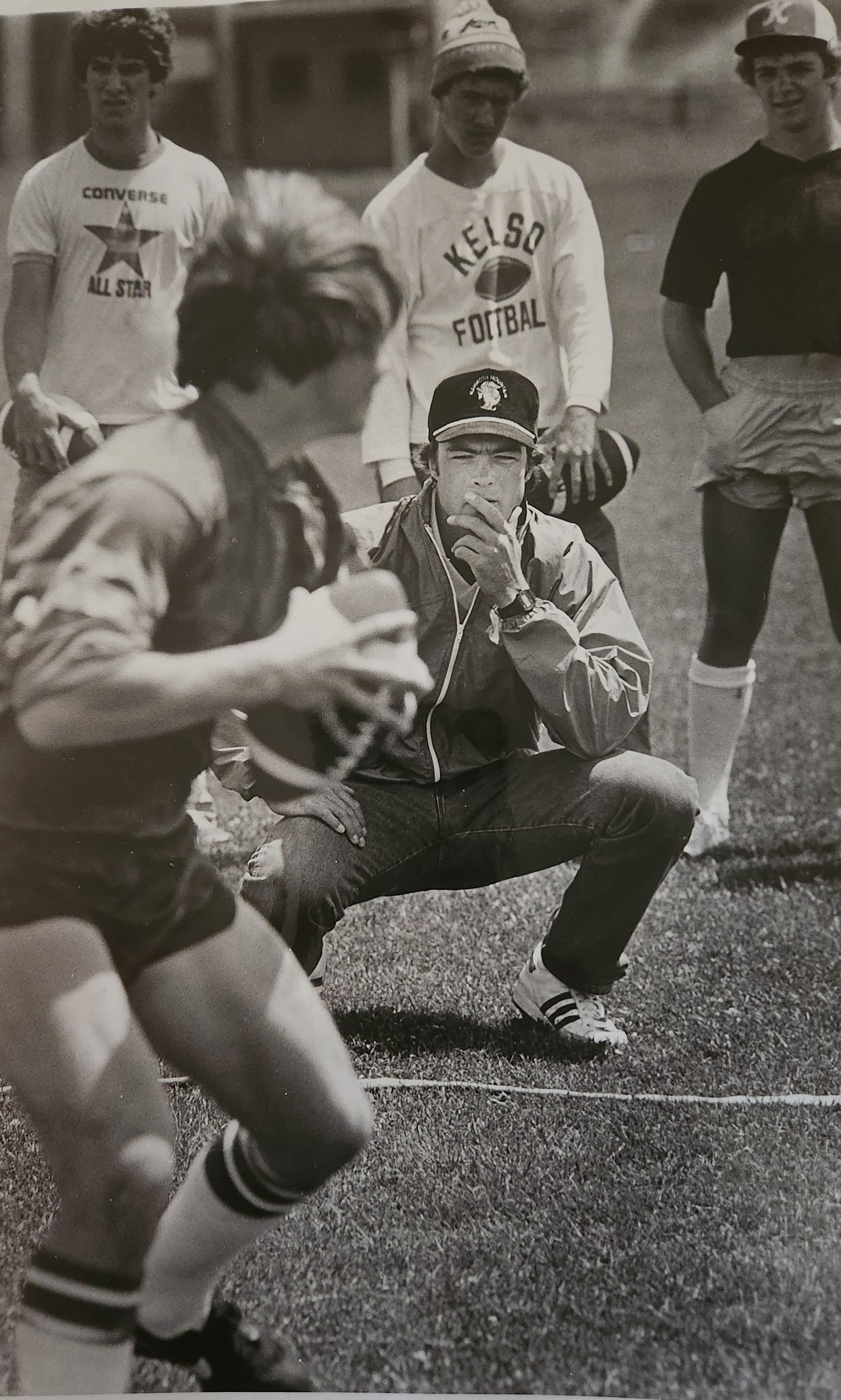Prep Football: Let’s go GOAT wrangling in Kelso
Talking Turkey — K-Town QB’s proud to pay their dues
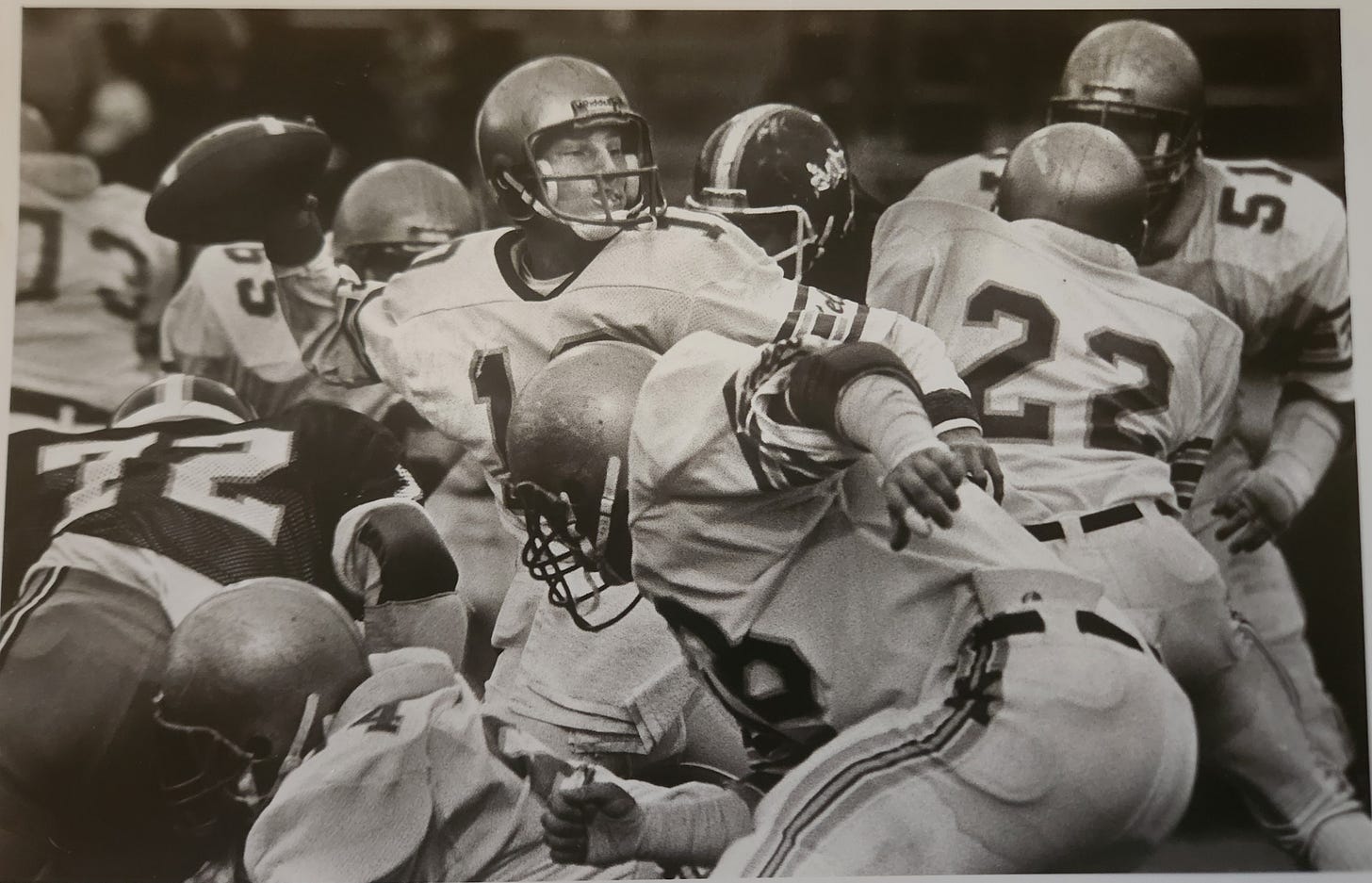
Editor’s Note: This is the third installment in a special series dedicated to remembering the best local high school quarterbacks of All-Time. We’re digging deep in the archives and talking to as many people as possible in order to leave no stone unturned. To read the first installments in this series click here, and here,. And if this story jogs your memory or makes you wonder how we missed something so obvious, please be sure to write in to tell us what we missed.
Sam Barbee for Blast Zone Media / blastzonenews@gmail.com
I’ve long looked across the Cowlitz River with a fair amount of jealousy. They have something over there in that overgrown loggers camp they used to call Little Chicago; something that we don’t have in Longview.
We might have a pretty cool time capsule hotel, and we have the big mills and the hospital and the river port.
But we don’t have it.
There’s a unity in Kelso, whereas Longview is divided. There’s a communal belief in Kelso, where Longview can be burdened with infighting and doubt. I grew up playing against Kelso this, and Kelso that. And it never really mattered how good everyone else was, because the boys in blue and gold always seemed to win.
They weren’t always better than us, though sometimes they were. But they were almost always better at winning.
They were — and they still are — Kelso.
One time, I officiated a middle school game right over there by the freeway. Coweeman at Huntington. Eighth grade. This would’ve been something like five years ago. Maybe six. Doesn’t matter. It was the last game of the year, and afterwards they all gathered in the south end zone, together, away from everyone else.
They were told then that they were no longer Huntington or Coweeman football players. They were now Kelso football players, and they were reminded of what that means. At the end they stood and raised their helmets.
“We are, Kelso!”
To the eye those helmets were still all painted in those familiar middle school colors – but in their minds their domes were now all gold.
I walked up the little hill at the north end thinking about that. We never had anything like that in Longview, I thought.
I grew up playing baseball at Central Cal Ripken, with guys who would go to R. A. Long and against guys at Western who would go to Mark Morris. I played football at Monticello against Cascade. The only place we were together was Longview Babe Ruth, and even then the high school tensions were always felt. And impossible to ignore.
Always.
And those middle school football players I saw on that day — just like so many before them and another batch just a few weeks ago — they went on to join the most recognizable institution in the county.
The Kelso Hilanders Football Team.
And now, it’s finally their turn. It’s time for us to dig into the Hilanders extensive and successful quarterback history. But, truth be told, Kelso is the place that really, really makes this project so tough.
The Option Life
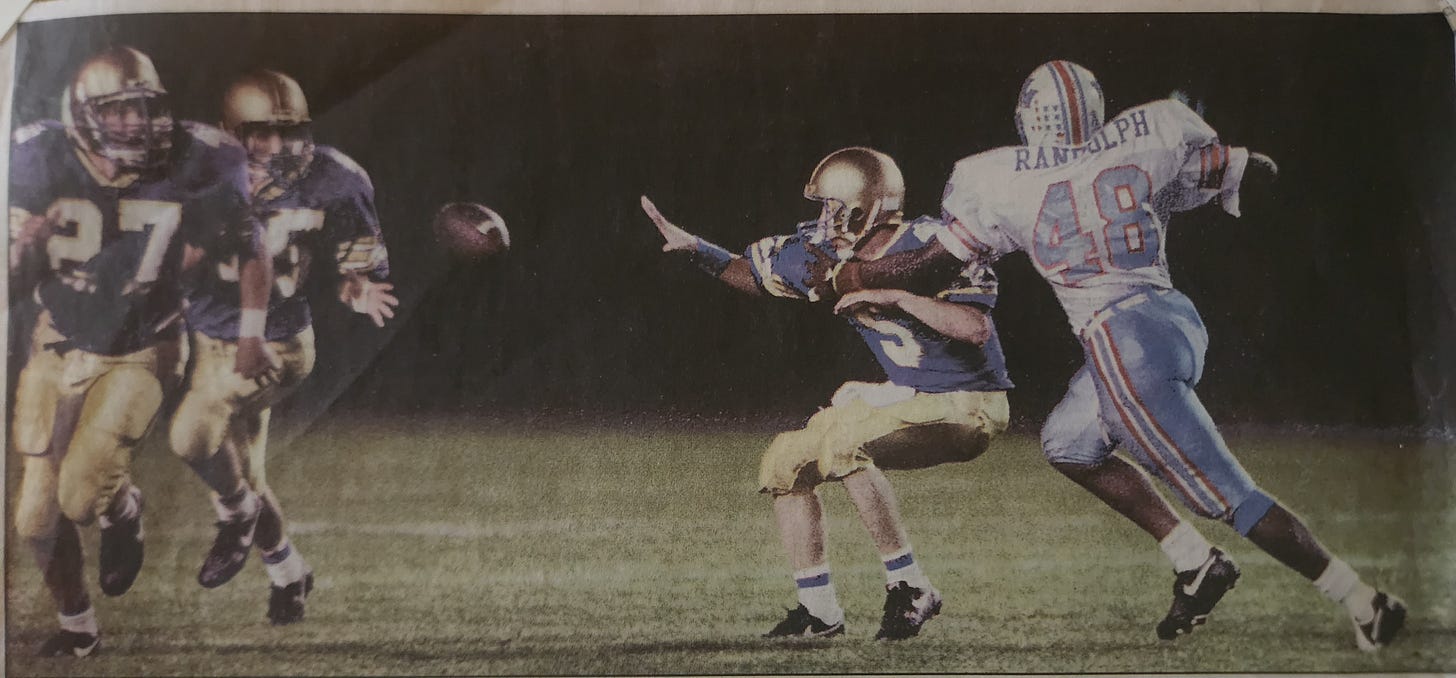
For most of its existence Kelso ran the option as a way of life. Even now, in a pass-first prep football environment, the Hilanders run the ball a ton and it’s the quarterback’s job to spread it around. Get it to everyone. And use your legs.
Or as Kelso head coach Steve Amrine would explain it, the Hilanders’ passing game is merely an extension of the running game.
Being an option quarterback lives in this special place. Your name is called a lot on the loudspeaker, and you’re going to run the ball a few times. But mostly what you’re trying to do is get the ball to your fullback on short yardage and let him bang up the middle, or get it to your running back and let him be faster than everyone on the edge.
You run out of necessity, or to minimize disruptions caused by the defense. You run to set the tempo, rather than reacting to it.
I learned to run the triple option offense as a fifth-grader on Swanson Bark and Wood playing for Darrell Warren and Dennis Sitch. We ran it over and over and over. And over. And over. I remember one time practicing into the dark. Parents were lining up, confused why they were still there. We had to do it perfect. I had to do it perfect. To those who still practice it, the option is gospel.
Then we’d get into games and it would work. I’d get the ball where it needed to go. I’d make the right read on the right player. Jordan Smith got the ball in places where being faster than everyone mattered, I ran it when they took him away. Our fullbacks got to hit someone on every play and snuck in a few carries in between. And everyone was happy.
It looks easy. It’s really not.
In many ways it’s the same sort of thing as the current air-attack offenses. You have to stress the defense and make them react to something. You read that decision and exploit it.
But it’s not sexy like passing is. It’s often an unselfish thing, a painful thing, a team-first thing.
It’s old-fashioned in that regard.
As I sifted through the names of Kelso quarterbacks of yore– and I’ll list a bunch shortly, don’t worry – I had this epiphany. I couldn’t shake this idea. I started thinking about that fall afternoon in North Kelso not so long ago. And I started thinking about all the baseball games against Kelso that we just couldn’t win a half generation before that.
And I kept thinking about it.
The Hilanders have almost always had it, and the quarterback of Kelso is merely a personification of the program as a whole. The leader of it, but not necessarily the star.
Maybe that makes it sound like it’s this simple, off-hand thing. Like someone in the Kelso Lion’s Club trailer parked under the grandstand just waves their hand absent-mindedly each fall and says, “Oh yeah, over the course of the last 100-plus years we’ve built, maintained and stewarded a system that organically and clearly personified the program’s most important virtues in its most front-facing position.”
If you repeat it enough, it’s bound to come true. Right?
And that’s what they did. That’s how it worked. Time and time again.
System Quarterbacks
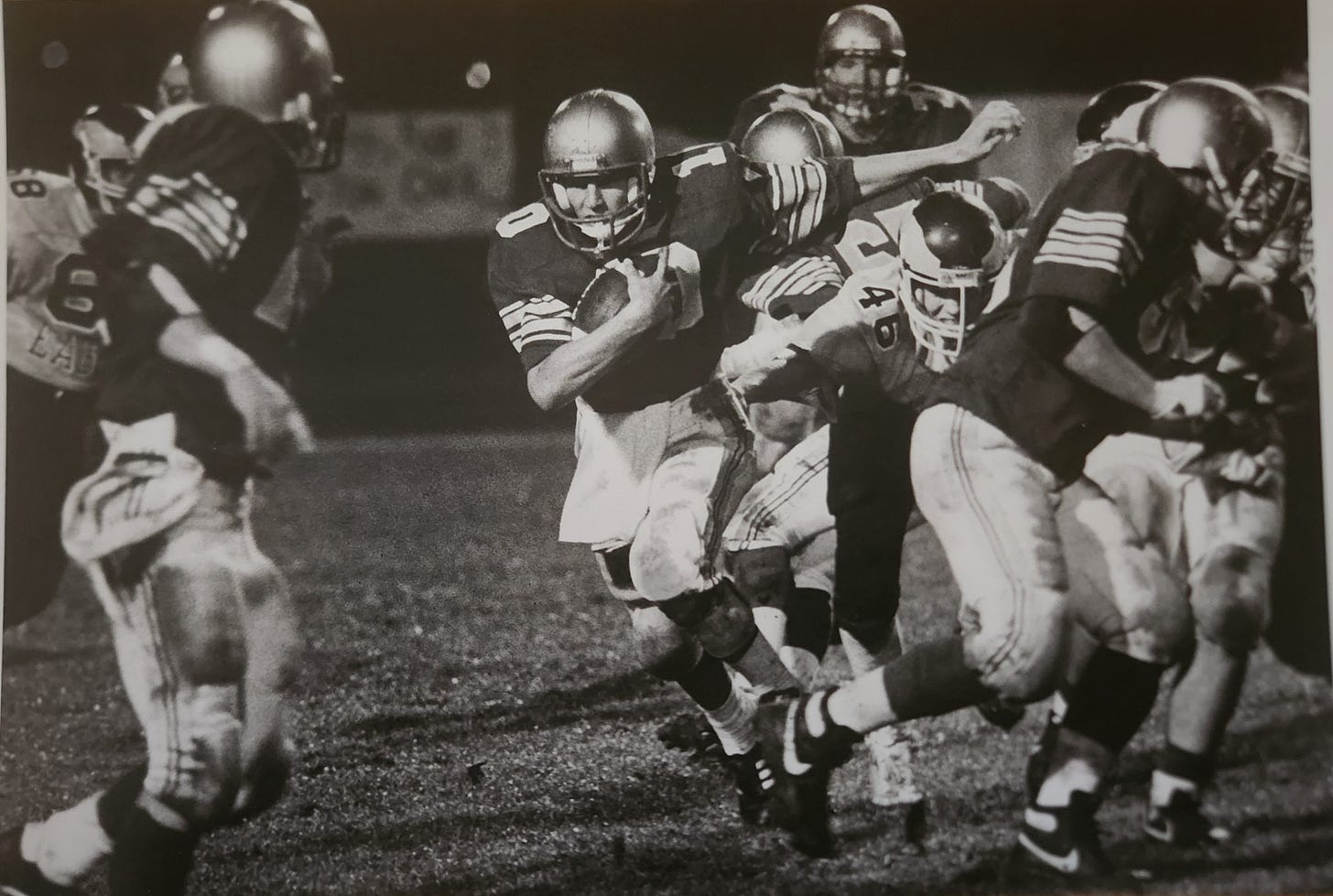
I was talking to Joe Kinch, stealing some time away from Kelso’s boys basketball coach as fall turns to winter, and he took me down memory lane for quarterbacks in the 1980s. Kevin Clark in ‘81-82.
Mike Giles in ‘83 for the State title. Scott Stroup in ‘84. Eddie Lauleinen Jr. in ‘85 and ‘86, while sharing some time with Troy Grassett. Then there was Scott Schauer, whose frame did not give off quarterback vibes but those of a pulling guard, took his turn in ‘87 and later went on to throw shot put at Western Washington. Then there was Robbie Hunt in ‘88. And then Kinch himself in ‘89.
So that’s 10 years of football and eight names. Multi-year starters were exceedingly rare under center. Seniors were entrusted with the signal calling, and freshmen weren’t even allowed on campus until the 2002-03 school year.
In the 1990s, Jeff Davis played his way to a full-ride to Boise State but handled the quarterbacking duties for just one year (more about Davis later) at Kelso. Brice Richards broke modest passing records in 1996, which is a lot like breaking them at Air Force, but somebody had to do it. And still, traditionalist Hilander fans almost certainly lamented every one of those throws as a lost opportunity to run the football.
Jumping backward a generation, Hilanders of a certain vintage speak about 1974 grad Dave Davidson in reverent tones for his work under center. And Dave Rukkila was mentioned by numerous longtime observers as one of the greatest quarterbacks in all the land, not just the county seat.
“He was damn good,” said Kinch.
In fact, some experts have Rukkila in the Top-3 for all of Southwest Washington since games were first played on the gridiron.
“He ran the option and was just unbelievable,” Mark Morris alum Darren Talley, who’s also a former Kelso, MM and R.A. Long coach, said of Rukkila. “That team probably should have won State.”
Instead, the Hilanders lost to Federal Way in a playoff game in a menacing fog at Longview Memorial Stadium. The game was decided on a field goal that people are still arguing over to this day. Did it go through the uprights? Was it short? Was it wide? Which side of the Cowlitz River you were born on likely determines which version of that story you were told.
“I was at that game watching it,” Talley said. “I thought Kelso was the better team.”
Dusting Off the Record Books
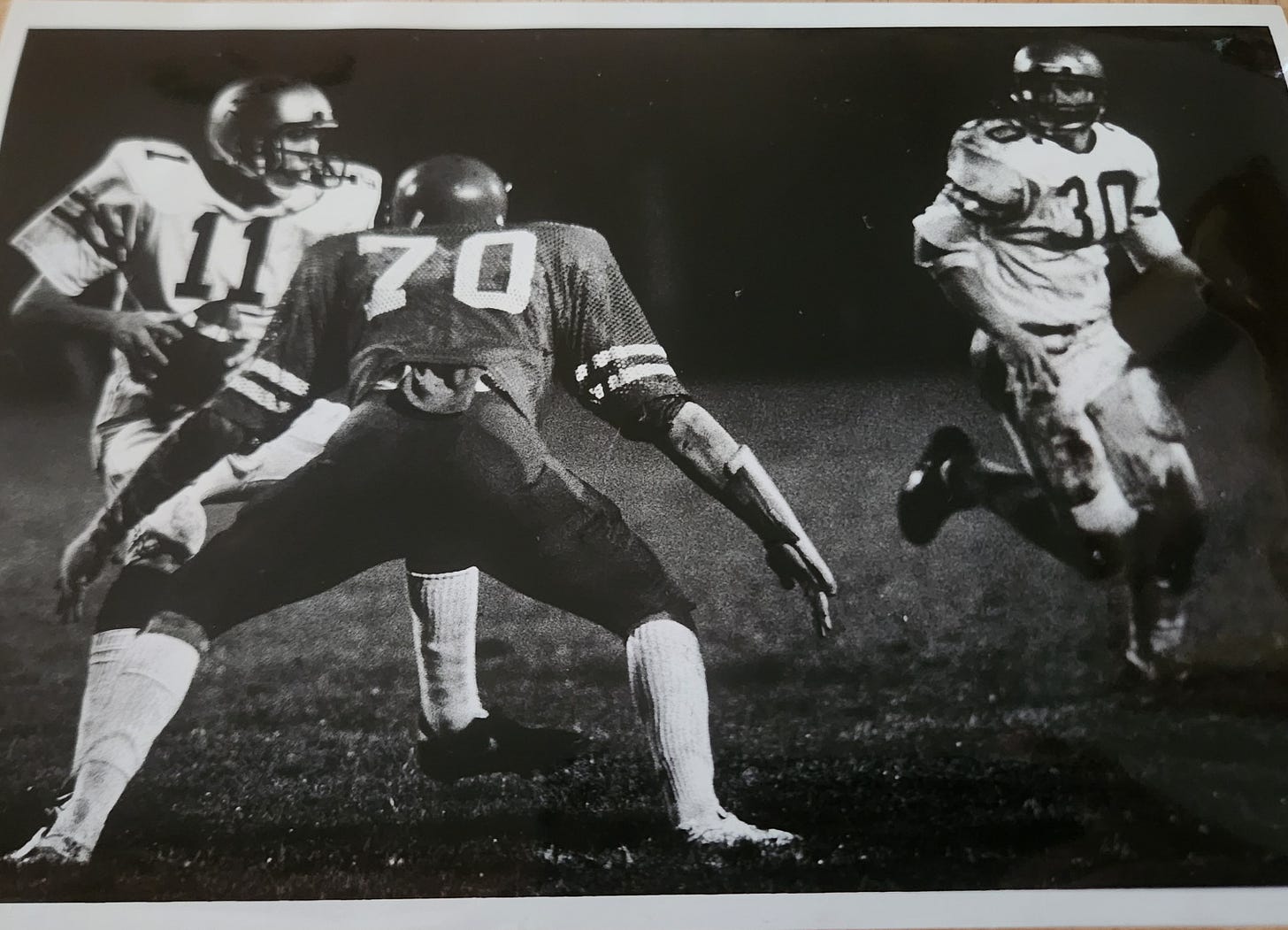
If we allow recency bias to be our guide then Hunter Letteer, class of 2022, would receive plenty of votes. And Tucker Amrine also has fans and stats to back him up after wrapping a career that saw him quarterback the Scots into the State playoffs time and time again.
But if we dust off the microfiche and look a little farther back, it’s quite likely that Gerry Austin is actually the most esteemed signal caller to have ever worn the blue and gold.
While details have been few and far between in our initial research, it appears that Austin led the Hilanders sometime in the 1940’s before going on to play at the University of Washington. (If you know more about Austin, please be sure to share the details in the comments, or send us an email with all the goods!)
I realize as I talk about this I’m missing a ton of history. Like almost anything from before 1980, for instance, but we promise to return to those years at a later date.
Remember when Kelso played where the fire station is now? Before the stadium happened to burn down one night in 1977. Before Longview’s Leo Gillnett designed a stadium for Longview’s Ed Lauleinen to coach the Hilanders in. Remember?
The prewar years. The postwar years. The years when they wore leather helmets and the years they played in the fancy new plastic helmets in the wave of the future 1950s.
But today I’m going to be primarily talking about what we would probably call the modern era of Kelso football. Laulainen to Hymes to Amrine. Fifty-three years of (mostly) option football and constant relevance, if not outright success. More than a half century of culture, of sacrifice, of togetherness and of legacy. Of gameday blazers and offseason workouts.
So when Kinch is listing off these names — This guy in that year. And then it was a year of this guy. And that guy played some this year but it was actually another guy who won the job… — the timeline tells a story and provides useful context for how to hold the measuring stick going forward.
The More Things Change
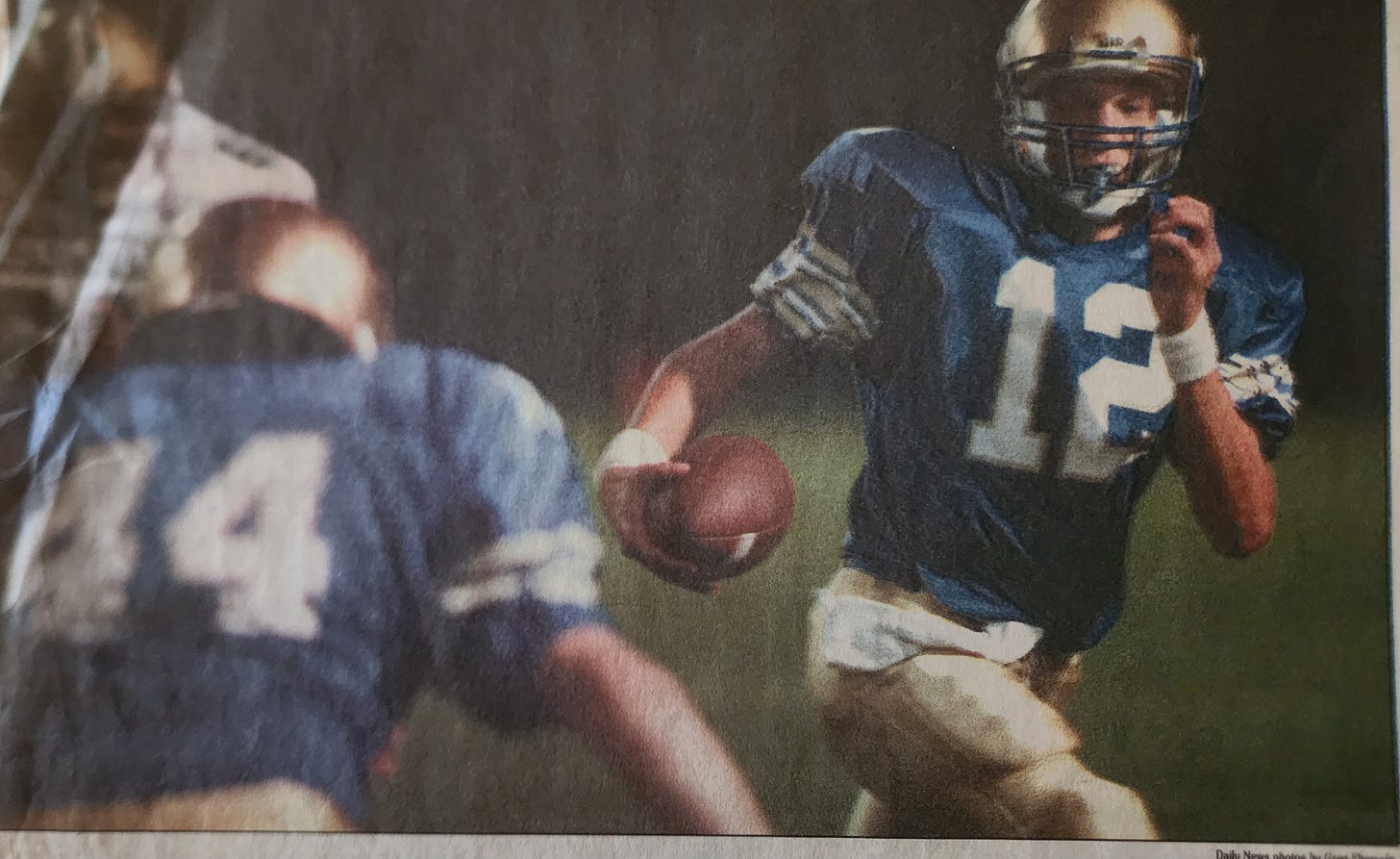
Of course, it’s not that way anymore.
In Amrine’s 12 years at the helm, he had five quarterbacks and three started for three years.
Hymes had more trouble with the names because there were so many more. But you probably remember some of them, too. Guys like Cort Carpenter, Brandon Sitch and Davis.
It was set up differently back in the day.
Back then, there was an impetus to keep the groups together. In a three-year high school, Hilanders were expected to play sophomore ball with the sophomores, junior varsity with the juniors, and varsity with the seniors. In fact, I think we can safely assume that junior varsity originally meant it was the juniors playing, not necessarily that it was a lesser level.
“The sophomores would polish the helmets for the seniors,” Hymes said. “I mean, their goal was to get the senior stuff ready in their lockers, pretty much.”
And they liked it.
“The mindset was you had the kid that came up next, and he’s your quarterback because he’s led that group,” Hymes explained. “You know, in those days, our sophomore team would be undefeated, our junior varsity would be undefeated. So you’ve got kids that have, you know, they haven’t lost a game.”
They clearly understood the value of kids playing together in that era. Kelso still does. Why are the Scots baseball teams always good? Well, because they have good players. But also because they grow up playing together, and they just don’t stop. The dudes on the 12-year-old All-Star team are gonna be the dudes over at Rister (or Sonnendecker) in a few years. And the kids over at Huntington and Coweeman will be the players at Schroeder Field soon enough.
And it makes a difference.
As a teammate you don’t have to guess what a guy’s gonna do. You’ve been seeing it for years. You’re in a space where these guys have been doing this thing together for the majority of their lives. The chemistry is inherent to the operation. The ensuing success begets more success.
A perfect situation for running the option offense.
And it’s a perfect situation for a bunch of secret agent quarterbacks to step in and make sure the mission stays accomplished. The people who need to know who he is, and what does, do know and do appreciate it. But it’s really hard for everyone else to see it, and it’s impossible for a casual fan to truly understand.
Coach Speak
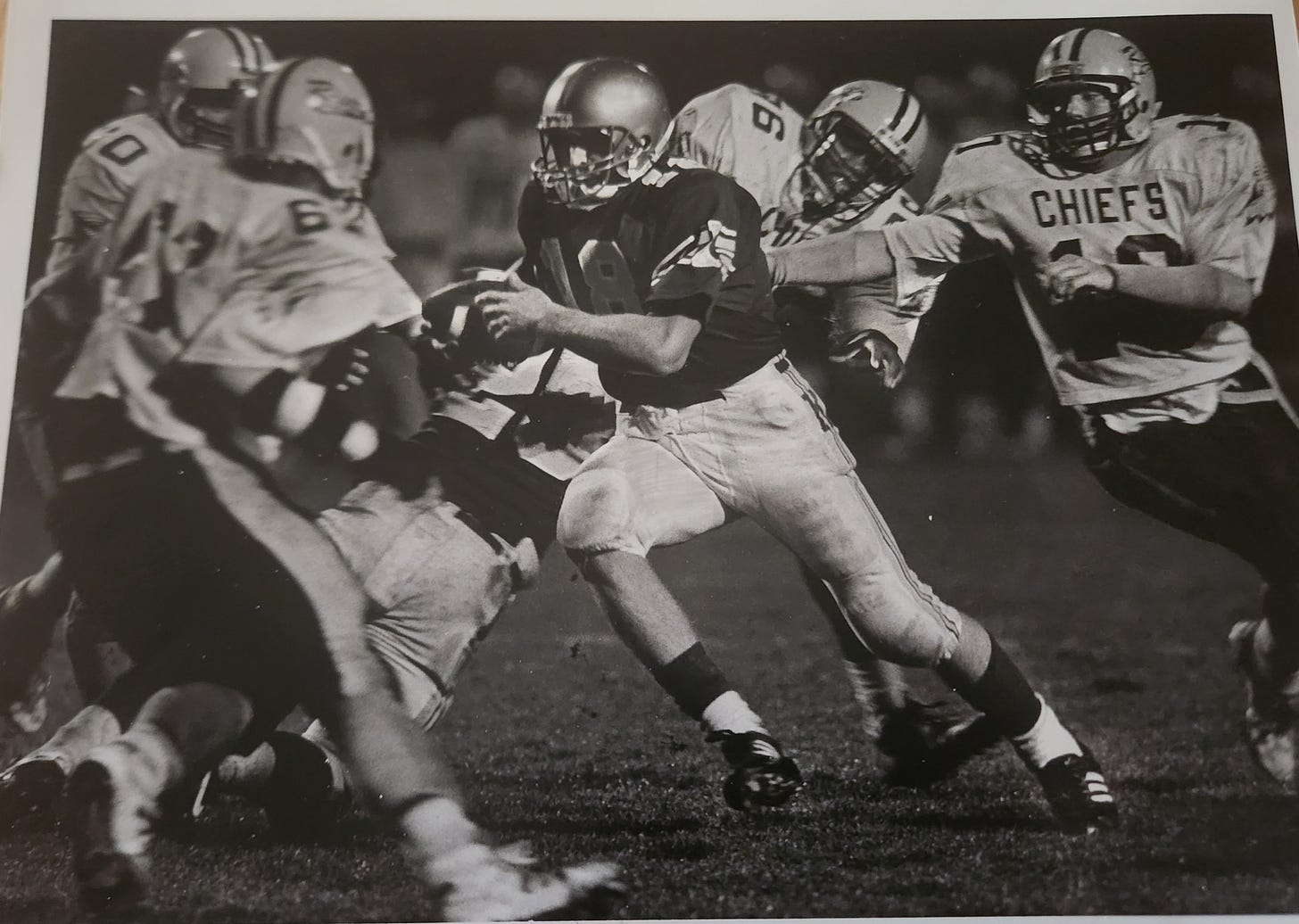
So I asked Amrine and Hymes what they look for.
Okay, Coach. You don’t have a guy at the spot and you need one. What do you look for? What traits – physical and otherwise – are needed to stand out at camp and thrive on Friday nights.
Their answers weren’t all that different, and the similarities were illuminating. First, we’ll give the microphone to the former coach.
Hymes: “Good feet. Somebody’s got to have real good feet, and has that kind of shortstop, point guard kind of guy that has the ability to kind of make things happen on the fly. Because the way you teach (option) isn’t the way it happens. So you have to be able to adjust, and be that kind of quick-footed…And then do the kids listen to him? Do his classmates, do the people around them listen to him? And you can see some of that early. You look at kids that, they have that innate ability that people follow.”
And now, let’s listen to the man who’s been calling the shots for the last dozen years.
Amrine: “You have to be able to throw it, run it, handle the ball, be strong. But then there also has to be a special ability of unwavering competitiveness, and it’s shown in many different ways. You don’t have to be a guy that kicks in the locker, it’s about getting things done. And when you’re in the huddle, can a guy command the huddle, will his teammates trust him, will the 300-pound offensive lineman look at him?”
The key here is neither coach was simply looking for the guy who threw the ball the best. That’s because in Kelso they are looking for someone to run the operation. Someone to run the team.
And it’s that unwavering focus on the team that has created this institution, and it’s the institution that continues to pile up wins while the passing stats remain relatively muted by comparison.
Getting Ink
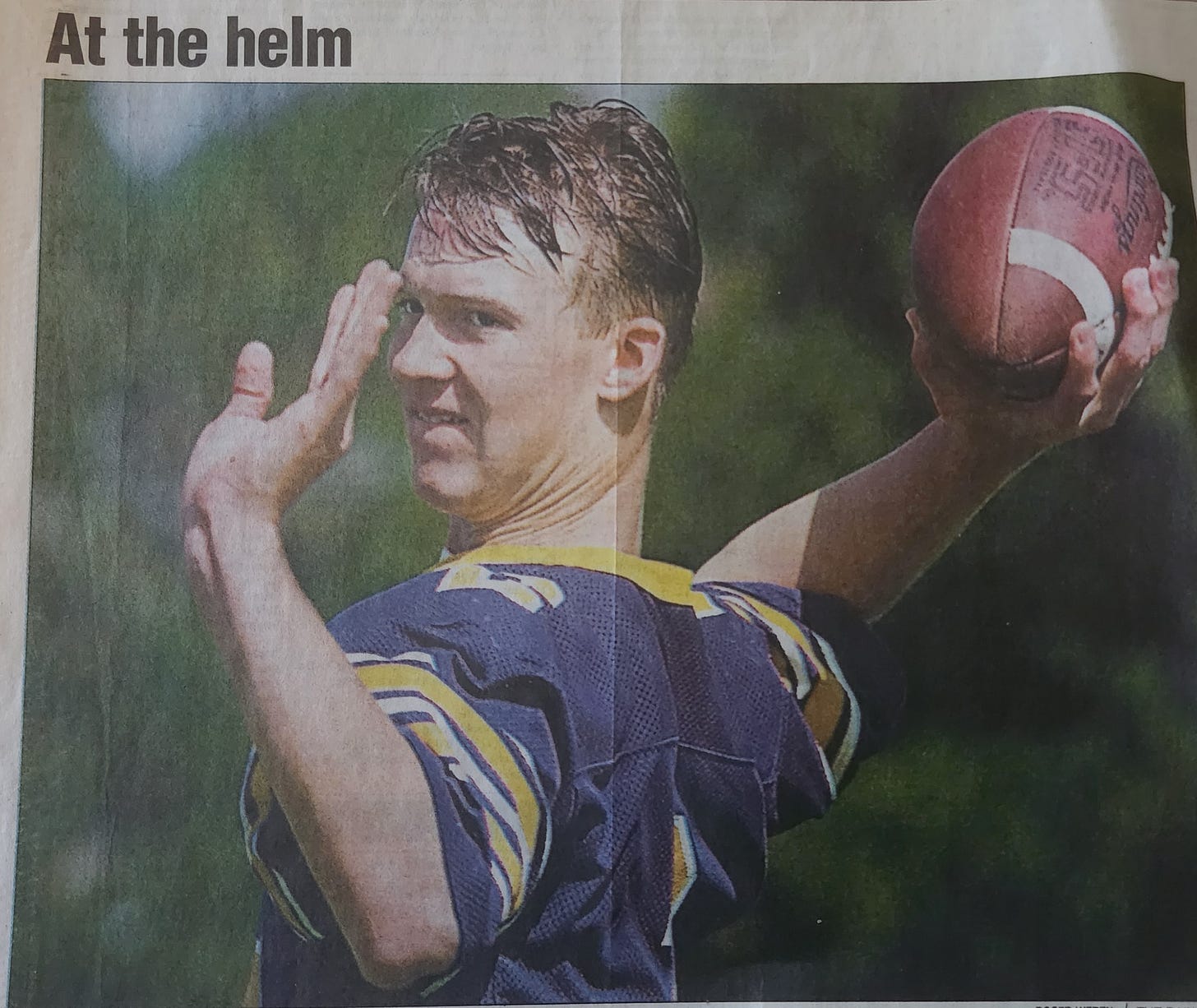
I read a story recently about the 1983 team that won the championship. The word used to describe quarterback Mike Giles was unselfish. Anyone who was close enough to hear about it in real time will tell you he was a great athlete, but the unselfish detail stands out to me. And that, of course, that State title that still means so much to the town that overconfident foes from north of Tumwater have been known to dismissively refer to as an “I-5 Truck Stop”.
Jeff Davis was the best athlete on the team as a sophomore. Hymes remembers him plucking an interception out of the air with one hand in his 10th grade season, and even he had to wait until his senior year to play football for Kelso. He went on to play safety at Boise State.
There were the days when running back Ty Fatheringill commanded the ball and it was Pat Millne’s job to get it to him.
Brice Richards set passing records under offensive coordinator Rob Hippi, and Jeff Handy won Co-MVP in 2001. Even then the idea of an option quarterback winning MVP made sense only because the wins made the math work.
Later on, there was Cort Carpenter, who was a two-year starter under center in the home stretch of Hymes’ coaching career.
Carpenter, who also played a little safety on varsity as a sophomore, could do all the things mentioned by both coaches above before running into Jake Locker of Ferndale in the 2004 semifinals at the Tacoma Dome. And Carpenter still thrills the local fans, coming back to Cowlitz County recently to rock the house in his wranglers and cowboy boots at the Columbia Theatre.
And then there was Brandon Sitch, better known for his wrestling career, and who’s dad I would later learn the option offense from.
One seemingly overlooked name is Makaio Mobbs from 2011-12, who Hymes had an interesting comparison for.
“He was like Kyler Murray in the sense that, it looked like he was moving, but he was moving,” Hymes said. “He was sneaky good.”
And then into the modern age. Kelso has entered the modern age in its own way. The quarterback is still asked to run and make decisions, and more often than tradition would indicate they even get to throw, but it will always be Kelso.
Starting with Zac Schuler in Amrine’s first season in 2013, with Zach Schuler, then A.J. Hoggatt for three. Then Marshall Coleman for two years, setting up a sophomore starting quarterback at Kelso in Hunter Letteer, an unfathomable proposition, and the second time Kelso had done it under that new guy, Coach Amrine.
Finally, it was Tucker Amrine’s turn. And all the third three-year starter for the Hilanders had to do was overcome a nearly fatal heart condition that took everyone by surprise midway through his junior season.
No matter what the quarterback was asked to do, he did it. It’s about the operation at Kelso. It’s not about the operator.
“There’s a lot good players that played quarterback,” Kinch said. “More football player, probably, than quarterback.”
4th and Goal
To play quarterback at Kelso is to be unselfish. It’s to be tough. It’s to be a leader.
To play football at Kelso is to be unselfish. It’s to be tough. It’s to be a leader.
Every year, Coach Amrine takes his seniors into the Hilander Hall of Fame and explains what it all means —This is what’s been done before you arrived on the scene. This is the standard you’re expected to live up to. This is what you’ll be compared to. Here’s your gameday blazer.
“It was started long before us,” Amrine said. “The swarm. The blazers. The gold helmet. That all goes into that belief of being able to win. And we’re gonna win.”
After all, they ARE Kelso.
Turkey Bowl Tussles
By Jordan Nailon / blastzonenews@gmail.com
On this week of gratitude would be remiss to leave out details on the traditional Turkey Day Bowl between Kelso and Longview High School (aka, R.A. Long). It was an environment so fraught with violence and bravado that the powers that be eventually moved it off of the holiday weekend in the name of public safety. And the masses have been forever clamoring, unsuccessfully, for something even half as fun to take its place in the decades since the tradition’s demise.
Today, the cross-river rivalry has slowed to a trickle, with the teams playing twice a decade or so and everyone more or less minding their manners. But it wasn’t always that way.
Darren Talley remembers showing up to watch the Turkey Day Bowl when he’d first moved to Longview as a sixth grader. Upon his arrival at The Stadium, the future Monarch recalls “10 to 30 people throwing blows on the field.”
And the game hadn’t even started yet.
Not that anyone in attendance was particularly concerned with anything other than would their favorite team (and presumably drunken uncles) would win or lose that day. It’s just the way things were back then between the bitter twin cities.
“That was the old time football that Longview and Kelso were used to playing and it made an impression,” Talley said.
And things only got more intense from there.
On Nov. 1, 1974, Kelso and R. A. Long lined up to play a game at Longview Memorial Field, but the unruly fans stole the show and the headlines. Per sources, the fight involved “hundreds of people” and moved from the sidelines into the crowd before ending up across the street.
The good news is, the game went on. The rest is even more difficult to imagine, so let’s read a first-hand account to get a better understanding.
From the Nov. 2 edition of The Daily News:
Heated fans in mix-em-up at game here
A traditional football rivalry got a bit more heated than usual Friday night, as several hundred fans got into a mix-em-up during and after the Kelso-R.A. Long game at Longview Memorial Stadium. One boy was sprayed with Mace stolen from a police officer and nine young people were arrested for assault, disorderly conduct, obstructing an officer and unlawful assembly.
It began near the end of the game in the mass of people roaming the sidelines. As the brawls grew more widespread, more people joined in the mob. The arrival of police swelled the crowd. The fight spilled over into the Monticello Junior High parking lot after the game, and the police closed down a dance for fear of trouble outside.
Although the game was stopped several times, it was completed and no players were involved.
Final Score
Scots 15, Jacks 8
Series Note: This story is a combined research effort by Sam Barbee and Jordan Nailon. Please help us out by telling us what you remember, and what we forgot, by sending and email to: blastzonenews@gmail.com



